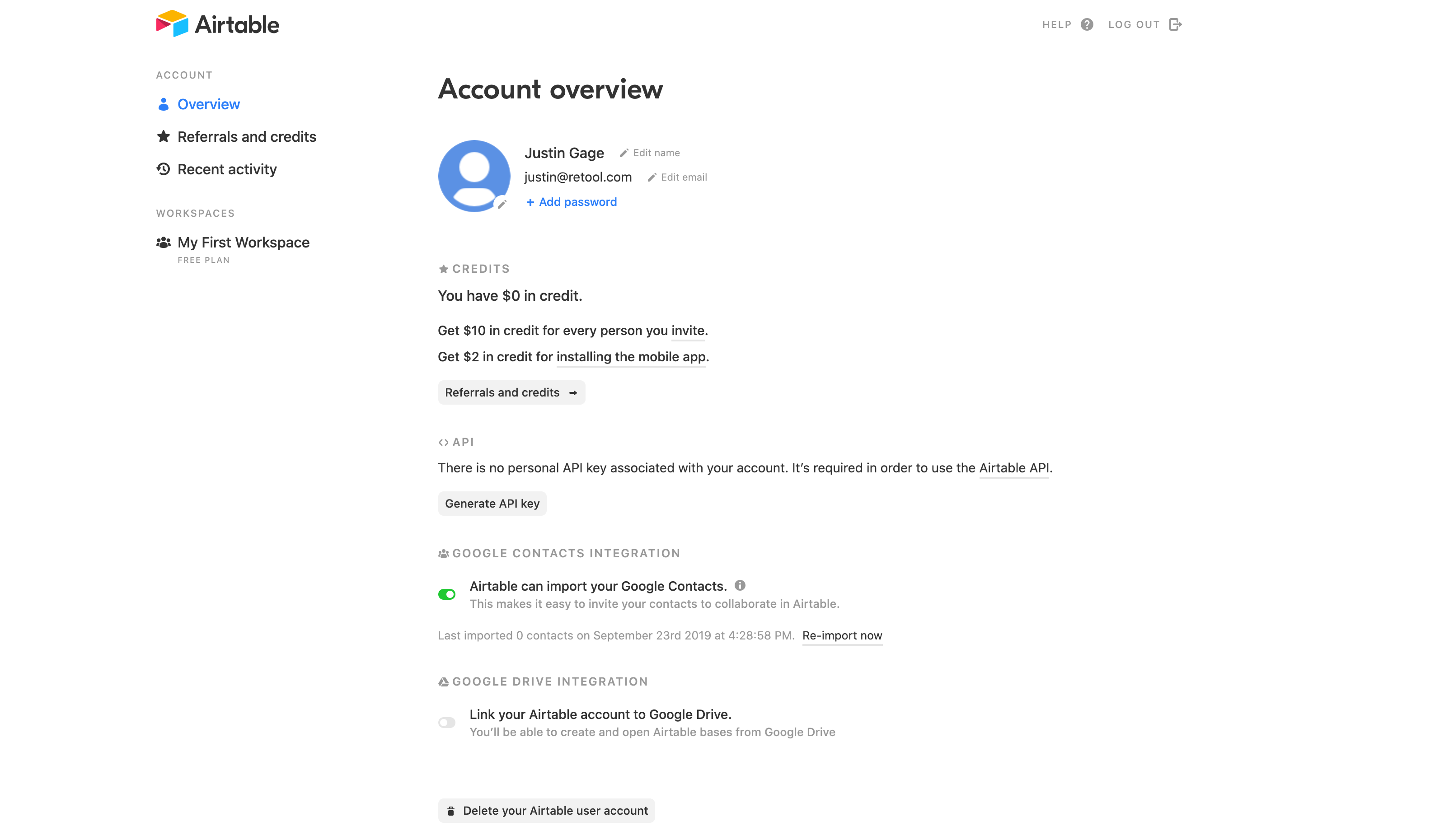


Custom widgets can read and/or write data in your document and express it in new formats, such as building invoices or mailing labels.
#Airtable permissions full
In Grist, all widget options are available on all plans, including the full palette of choice colors.įor technical users with some coding ability, custom widgets open up more possibilities. For some widgets Airtable limits options - such as limiting choices to 7 colors - except on the highest-priced plan. Both offer convenient widgets, such as a calendar picker for dates, and a dropdown with auto-complete for choices. This is a database approach, and is a shared differentiator when compared to traditional spreadsheets. Grist and Airtable both offer columns of several types, such as Numeric, Text, Date, Choice, Reference, and Attachment. I have this need in Task Management I am running in Fibery, where I have groups of Tasks in Types that I’d like to have only certain users see, and not the whole App’s worth of Types.The ability to custom build your own highly productive layouts makes Grist a more flexible data tool for any project or business. The addition of the Type-level permission makes it easier to break down groups of Entities within an App. Via mentioning a user, they get access to an individual Entity only. You can access particular users to a Type, much as you do now with a whole App So in the case of Fibery, I think you have a great chance with your existing hierarchy to do a similar approach that would be very familiar to those coming in from these tools - and perhaps others who handle things similarly like Hive, Monday, Teamwork Projects, etc. You can “share” lists/folders/projects to a particular group.

If you a user within a comment stream, they get added just to that particular task One of my favorite, which is central in Wrike, and Asana, and ClickUp - who I might loosely consider a similar “triumvirate” of “Task Managers” like Airtable/Coda/Notion is within the “nocode” sub-space, all do this: Many of the tools I’ve used have nice ways to handle these levels of permissions. So stuff like development chores, recruiting tasks, recurring posting of blog articles each week, etc.
#Airtable permissions software
I am trying to set up all all “work items” in my team (small software development with some marketing, HR, content, etc.) can be tracked in one place. Here is my situation and why this would be useful: I know this is something you are thinking about, but I wanted to add the request here as a sort of “upvote” to make a case to prioritize this. Hopefully, these sensible defaults will work for most scenarios: To share a Project and all its Tasks (and their Subtasks), we need some kind of inheritance.įibery knows better than vertical hierarchy distinguishing between one/many - one/many relations and making things difficult for permissions.
#Airtable permissions free
Those with Full Access are free to share an Entity with an individual User or a Group by picking one of these levels.Īll Entity “companions” are shared automatically with the same level: Files, Documents, Whiteboards, etc. There are 4 default levels of access (the same is in Notion, what a coincidence): Hopefully, we think we have a decent model. Well, they are extremely hard to get right - even conceptually, without thinking about UI and implementation. You might ask: if they are so important, why the fu Entity-level permissions haven’t been implemented yet? Solving climate changeĭelegating tasks to contractors, splitting CRM among sales folks - the list goes on…Īlso, based on how Fibery works under the hood, we need some form of Entity-level permissions to build My Space, Read-only users, and collaborative external sharing. Sharing everything inside a Product, Objective, or Initiative would facilitate cross-functional collaboration™ (buy our book on successful enterprise success®).


 0 kommentar(er)
0 kommentar(er)
